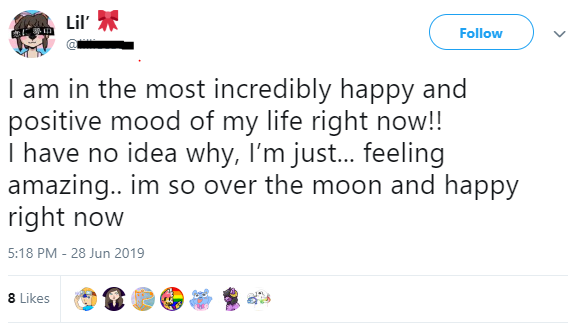Here is a quick legal evidence quiz: Identify the three distinct hearsay exceptions in the following Tweet:

The first exception would be under Federal Rule of Evidence 803(2):
“Rule 803. Exceptions to the Rule Against Hearsay: . . . (2) Excited Utterance. A statement relating to a startling event or condition, made while the declarant was under the stress of excitement that it caused.”
Pretty clear here. The four OMGs are a good indication. So no one can argue that the phrase “OMG” never has any legal consequence.
The second exception would be under FRE 803(1): “Present Sense Impression. A statement describing or explaining an event or condition, made while or immediately after the declarant perceived it.”
And if the witness some time later did not recall details of the incident (two words: Vegas, hangover), the statement could be introduced as a recorded recollection under 803(5).
Another key hearsay exception are statements offered as evidence of the then state of mind of the declarant. While YouTube is known for cat videos, Twitter and Facebook are in large part a platform for statements like this:

In other words, to quote FRE 803(3): “Then-Existing Mental, Emotional, or Physical Condition. A statement of the declarant’s then-existing state of mind (such as motive, intent, or plan) or emotional, sensory, or physical condition (such as mental feeling, pain, or bodily health)”
While social media is a great place to find out what Kim Kardashian and Justin Bieber are thinking or feeling on a given day, the state of mind of a party or witness is a common issue in many legal matters. (See Gordon v. T.G.R. Logistics, Inc. (D. Wy. May 10, 2017) (Court orders production of entire Facebook Account history as relevant to mental and emotional state of Plaintiff)).
And finally, arguably the most compelling social media evidence stems from the propensity to self-incriminate oneself on Twitter, otherwise known as a Statement Against Interest under FRE 804(b)(3). This takes multiple forms, including flat out admissions of liability, or previous statements that contradict or otherwise impugn the integrity of a declarant. For instance:

The bottom line is that social media provides a treasure trove of evidence that also tends to fall under evidentiary hearsay exceptions, unlike other forms of out of court statements.
But if you are offering social media evidence under a hearsay exception in court, that would likely mean you have an uncooperative or otherwise unavailable party who authored the social media statement in question. In such cases, the authenticity of the post must be established through circumstantial evidence since direct testimony is not available, and you will need the right software to both identify such evidence and properly collect it utilizing best practices to ensure its admissibility in court.
